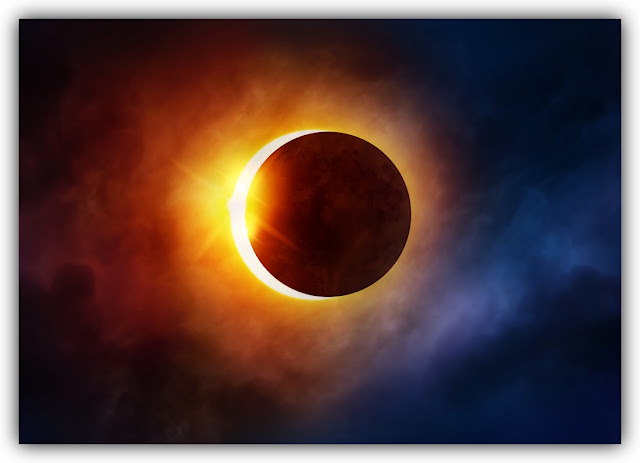Calendar
The Order of the Knights of Gaia often utilizes the ceremonial Gaian calendar, a new calendrical system for a new age. It was inspired by the philosophy of Gaianism and devised by Philip Kanellopoulos. The Gaian calendar is lunisolar, coordinated with the cycles of both the synodic month and the tropical year. The year 0 EG (‘the Epoch of Gaia’)—or, more properly, ΕΓ (‘η Εποχή της Γαίας’)—began on 8 January 1970 CE (‘the Common Era’), the date of the calendar’s epoch. The first Earth Day was celebrated that same year, on 14 Quilla 0 EG (21 March 1970 CE). Any years preceding the year 0 EG are designated with a negative number, such as -1 EG.
Please choose any Gaian year EG (concurrent with a conventional Gregorian year CE) to view the calendar for that year:
The Gaian calendar incorporates the nineteen-year Metonic cycle. The year 0 EG ends one particular nineteen-year cycle, and the year 1 EG begins the next. Each year contains twelve (or thirteen) synodic months, those with twenty-nine days generally alternating with those with thirty days. An intercalary month of thirty days is added as a thirteenth month within seven of the nineteen years. This ‘leap month’ occurs as the final month of the second, fifth, seventh, tenth, thirteenth, fifteenth, and eighteenth years of each nineteen-year cycle. An intercalary day is added as a thirtieth day of the twelfth month within four of the nineteen years. This ‘leap day’ occurs as the final day of the third, eighth, twelfth, and seventeenth years of each nineteen-year cycle. Therefore, the basic pattern of the number of days in each month in any given year is: 29, 30, 29, 30, 29, 30, 30, 29, 30, 29, 30, 29/30, (30). Every fifty-seven years (that is, three successive nineteen-year cycles), one day is subtracted from the final month of the most recent year that would otherwise have contained a leap day. (That includes, among others, the year -59 EG, (the year -2 EG), the year 55 EG, the year 112 EG, and the year 169 EG.) Every 855 years (that is, forty-five successive nineteen-year cycles), one day is restored to the final month of the most recent year wherefrom a leap day would otherwise have been removed. (That includes, among others, the year -857 EG, the year -2 EG, the year 853 EG, and the year 1708 EG.) Every 6,460 years (that is, 340 successive nineteen-year cycles), one month of thirty days is subtracted from the most recent year that would otherwise have contained a leap month. (That includes the year -6461 EG, the year -1 EG, the year 6459 EG, and the year 12919 EG.)
The thirteen months of the Gaian calendar, using names for the Moon from various cultures around the world, are called, in chronological order: Hanwi (Lakota, 29 days), Metztli (Nahuatl, 30 days), Quilla (Quechua, 29 days), Tungl (Icelandic, 30 days), Gelach (Gaelic, 29 days), Inyanga (Zulu, 30 days), Khonsu (Egyptian, 30 days), Qamar (Arabic, 29 days), Chandra (Sanskrit, 30 days), Bulan (Indonesian, 29 days), Yueqiu (Mandarin, 30 days), Tsuku (Japanese, 29 or 30 days), and Mahina (Hawai’ian, intercalary, 30 days). Each month contains four lunar weeks of either seven or eight days, corresponding to the quarterly lunar phases. The names of the days of the week, derived from Modern Indo-European words, are: Mensós [/mɛnˈsɔs/] 🔊, Taronós [/tɑroˈnɔs/] 🔊, Lughous [/ˈlʊghɔʊs/] 🔊, Diwós [/dɪˈwɔs/] 🔊, Ausosés [/ɑʊsoˈsɛs/] 🔊, Satorni [/sɑˈtornɪ/] 🔊, and Sawlós [/sawˈlɔs/] 🔊. Between the second and third week of every month, an extra (eighth) day of the week, called Plenós [/pleˈnɔs/] 🔊, is inserted in observance of the full Moon. At the end of any month containing thirty days, the thirtieth day is called Newos [/ˈnɛwɔs/] 🔊, in observance of the new Moon. This scheme ensures that every month (and roughly every lunar quarter) begins on a Mensós, the first day of the week.
The meridian that effectively bisects the central caldera (Reusch Crater) of Mount Kilimanjaro, Tanzania, reckoned conventionally as being at 3° 3’ 52” S, 37° 21’ 30” E, is the prime meridian for timekeeping. (That is 37.358333° longitude east of the IERS Reference Meridian.) (Kilimanjaro is the tallest mountain in Africa, the continental birthplace of the human genus.) Gaian Time (Kilimanjaro), then, is precisely 8,966 seconds (or about 2.49 hours) later by the clock than Coordinated Universal Time. The antimeridian, on the opposite side of the Earth from the prime meridian, runs along that which is conventionally 142° 38’ 30” W. (That is 142.641667° longitude west of the IERS Reference Meridian.) The green, vertical line shown on the above map of the world represents for the Gaian calendar the prime meridian (through Kilimanjaro) and its antimeridian. The red, diagonal line represents for the Gregorian calendar the prime meridian (through Greenwich, England) and its antimeridian.








